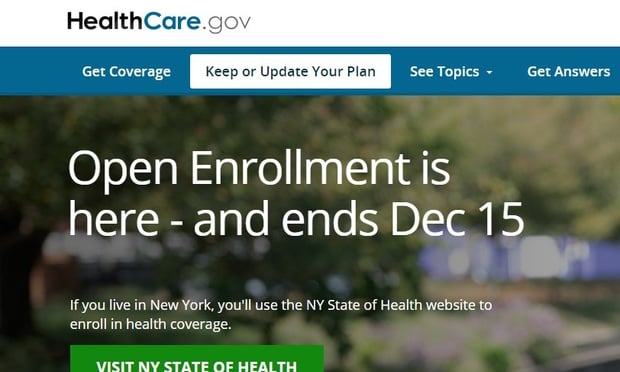
10. A NEW CONSUMER PAYMENT BLUEPRINT EMERGES
AITE GROUP SAYS: "An argument can be made that any vibrant consumer payment market contains a mix of payment types, and in cases in which the bill amount is "large" in the consumers' eyes, a card-based payment may hold some benefit to them as a payment type. However, this trend is not an analysis of the strategy; rather, it is an analysis of the trends that show card-based payments increasing, checks payments volume increasing, and ACH increasing but at a rate less than cards and checks from 2017 to 2020. As a result, Aite Group expects payers, providers, and payments vendors to pivot on their strategy—and the bill, not the payment, is forcing the pivot."This pivot is occurring because it is not lost anymore on healthcare businesses that electronic bills drive desired behaviors. On one end, it aligns with an ACH-first strategy, as bill payers that receive an electronic bill use ACH more than any other payment form. On the other end, consumers who receive electronic bills pay through the payer's or provider's website or mobile app more than any other channel. In other words, electronic bills engage consumers."

TOP 10 TRENDS IN HEALTH INSURANCE FOR 2021
1. INDIVIDUAL HEALTH CARE EXCHANGES FIND RENEWED INTEREST
AITE GROUP SAYS: "Even prior to the COVID-19 pandemic and in a robust economic environment, employers were searching for options to alleviate the cost of health insurance, a coveted benefit for their employees. The economic environment is weighing heavily on those employers as they stay guarded for 2021 but remain in search of alternatives. Enter state and federal health insurance exchanges formed under the Affordable Care Act and off-exchange retail channels."In 2021, Aite Group expects to see the Affordable Care Act, currently under U.S. Supreme Court review, to emerge with several concessions but remain largely intact. The concessions will come from repealing or modifying the individual mandate. Once that hurdle is cleared, the doors will be flung open for individual health care exchanges. While not a panacea, individual health insurance exchanges will be a viable tool for employers seeking to absolve themselves from providing health insurance to their employees. The next chapter, featuring consumer growing pains from learning to shop for health care plans on their own, will then begin in earnest."

2. IT'S READY, SET, SLOW FOR ICHRAS (individual coverage health reimbursement arrangements)
AITE GROUP SAYS: "Employers will require years of handholding to understand the nuances of ICHRAs and how the risk of ICHRAs compares with group-health-plan-related costs and self-funded health plan costs. Securing favor with the employees will also be a major endeavor, as many will be faced with the prospect of shopping for their own health insurance for the first time. User-friendly packaging and communication will make that prospect less daunting."Aite Group anticipates that 2021 will be the beginning of a long period of slow burn for ICHRAs as employers regain their bearings and plan for changes to their benefits packages in the 2022 enrollment season. The 2022 open enrollment season, which will kick into high gear in summer 2021, will reflect a cost-sensitive employer sentiment—one in which ICHRAs can play a valuable role. ICHRAs have the potential to become the defined-contribution equivalent of the future for health benefits, but it will be a slow burn to get there."

3. EMPLOYERS SEE VALUE IN PERSONALIZED BENEFITS
AITE GROUP SAYS: "Younger employees care more about accident and disability products, and their older employees may be interested in long-term care and retirement planning. Similarly, critical illness and hospital reimbursement benefits may serve the needs of the employees who are short on emergency savings."In 2021 and following years, Aite Group expects businesses to work with solution providers that help customize their employees' plans and provide personalized communication. We could also see solution providers and insurance carriers use artificial intelligence and machine learning algorithms to design propositions that combine products and benefits for employees' unique needs."

4. STUDENT LOAN REPAYMENT PROGRAMS BECOME MAINSTREAM
AITE GROUP SAYS: "Although only a small number of employers offer student loan repayment, Aite Group has seen a steep rise in employers' interest in this benefit offering in the last few years. Benefit solution providers have also paid a lot of attention lately, and both direct payment and retirement-plan-based solutions are being actively marketed. These circumstances, along with support from the CARES Act, will propel employers in the direction of faster adoption in 2021. Google's announcement to match up to US$2,500 per year for Google employees' student loans starting in 2021 can also start a trend in the technology industry."Advertisement

5. FINANCIAL GUIDANCE BECOMES A DIFFERENTIATOR
AITE GROUP SAYS: "The COVID-19 pandemic has exposed the delicate matter of financial strain on employees and the toll it takes on their work performance, and has exacerbated the need for improving financial health. It is no surprise, then, that financial wellness is resonating with employer benefit plan sponsors, insurance carriers, and financial institutions seeking to find appealing Band-Aid fixes to the persistent gap between real earnings and financial resources needed for emergencies, college tuition, retirement, and beyond."A growing number of financial institutions, fintech vendors, banks, employer benefit providers, and insurance carriers are ready to ring in 2021 by repackaging and bundling their products to meet this emerging employer need. But serving up yesterday's financial solutions with a thin financial wellness wrapper will not cut it. After all, doing the same thing and expecting a different outcome does not produce desired results. Financial wellness tools and guidance support services will evolve and take on a more nuanced tone as they permeate employer benefits enrollment platforms, consumer-friendly calculators, and decision support tools."

6. TELEHEALTH OFFERS A LIFELINE FOR MENTAL HEALTH
AITE GROUP SAYS: "Telehealth is highly promising but needs some important fine-tuning, particularly as it relates to the infrastructure across the country required to bring telehealth services to everyone's home. Video sessions require reliable broadband or internet access and smartphones, tablets, or computers with the proper software installed for the user."Aite Group expects that 2021 will be the year that telehealth becomes the means to making care more comprehensive, bringing digital care to the front and center—a trend that will reshape health plans and life insurance carriers. Just as the internet became part of our daily lives just over 20 years prior, it is Aite Group's expectation that telehealth will become an integral part of care delivery in a seamless, omnichannel manner."

7. TRANSPARENCY TAKES THE LID OFF THE PAYER-PROVIDER RELATIONSHIP
AITE GROUP SAYS: "2021 will mark the dawn of the consumers as a truly core component of the healthcare pricing model as they learn to shop for healthcare services based on metrics that include price and quality and become confident in using their dollars to obtain the best bang for their health buck. After all, as consumers become more financially savvy, as we discuss earlier in this report, their questions will spill beyond how much to save for emergencies or retirement, but also for health."The truth is that regulation or not, the true ripple effects of price transparency have not yet truly begun. In 2021, Aite Group expects ongoing discussion, negotiation, bargaining, and pleas for postponement on price transparency measures, led by health plans and healthcare providers. 2021 will not be the year that healthcare prices are clarified once and for all, but rather it will be the year when that multistep, multiyear process begins in earnest."

8. THE SHIFT TO THE LEFT PICKS UP STEAM FOR FRAUD PREVENTION
AITE GROUP SAYS: "In the span of five years, the FWA ( fraud, waste, and abuse) market has undergone active reorganization, with acquisitions of point solution providers by those seeking to expand their footprint or book of business in fraud in healthcare and to round out their set of capabilities and services to meet health plans' needs. That reorganization couldn't have been completed at a better time. Moving forward, differentiation will come from, well, doing something differently. Instead of retroactive fixes, the way to nip FWA in the bud is by going upstream in the claims workflow or shifting left."
9. THE REIMBURSEMENTS MARKET (FINALLY) WELCOMES NEW DIGITAL PAYMENTS
AITE GROUP SAYS: "The path to adding new digital claim payments is not a slam dunk given the market has traditionally been a three-horse race. However, this coming year is different because payers and third-party administrators have invested resources in vetting new types as part of a broader "ACH strategy." Interest in taking the next step to operationalize offering new types and in converting providers indifferent to virtual cards and EFTs is high. Electronic check conversion displays the most promise as a new payment form to be introduced into the market, and Same Day ACH will likely see promise this year as well."Advertisement

10. A NEW CONSUMER PAYMENT BLUEPRINT EMERGES
AITE GROUP SAYS: "An argument can be made that any vibrant consumer payment market contains a mix of payment types, and in cases in which the bill amount is "large" in the consumers' eyes, a card-based payment may hold some benefit to them as a payment type. However, this trend is not an analysis of the strategy; rather, it is an analysis of the trends that show card-based payments increasing, checks payments volume increasing, and ACH increasing but at a rate less than cards and checks from 2017 to 2020. As a result, Aite Group expects payers, providers, and payments vendors to pivot on their strategy—and the bill, not the payment, is forcing the pivot."This pivot is occurring because it is not lost anymore on healthcare businesses that electronic bills drive desired behaviors. On one end, it aligns with an ACH-first strategy, as bill payers that receive an electronic bill use ACH more than any other payment form. On the other end, consumers who receive electronic bills pay through the payer's or provider's website or mobile app more than any other channel. In other words, electronic bills engage consumers."

TOP 10 TRENDS IN HEALTH INSURANCE FOR 2021
1. INDIVIDUAL HEALTH CARE EXCHANGES FIND RENEWED INTEREST
AITE GROUP SAYS: "Even prior to the COVID-19 pandemic and in a robust economic environment, employers were searching for options to alleviate the cost of health insurance, a coveted benefit for their employees. The economic environment is weighing heavily on those employers as they stay guarded for 2021 but remain in search of alternatives. Enter state and federal health insurance exchanges formed under the Affordable Care Act and off-exchange retail channels."In 2021, Aite Group expects to see the Affordable Care Act, currently under U.S. Supreme Court review, to emerge with several concessions but remain largely intact. The concessions will come from repealing or modifying the individual mandate. Once that hurdle is cleared, the doors will be flung open for individual health care exchanges. While not a panacea, individual health insurance exchanges will be a viable tool for employers seeking to absolve themselves from providing health insurance to their employees. The next chapter, featuring consumer growing pains from learning to shop for health care plans on their own, will then begin in earnest."

2. IT'S READY, SET, SLOW FOR ICHRAS (individual coverage health reimbursement arrangements)
AITE GROUP SAYS: "Employers will require years of handholding to understand the nuances of ICHRAs and how the risk of ICHRAs compares with group-health-plan-related costs and self-funded health plan costs. Securing favor with the employees will also be a major endeavor, as many will be faced with the prospect of shopping for their own health insurance for the first time. User-friendly packaging and communication will make that prospect less daunting."Aite Group anticipates that 2021 will be the beginning of a long period of slow burn for ICHRAs as employers regain their bearings and plan for changes to their benefits packages in the 2022 enrollment season. The 2022 open enrollment season, which will kick into high gear in summer 2021, will reflect a cost-sensitive employer sentiment—one in which ICHRAs can play a valuable role. ICHRAs have the potential to become the defined-contribution equivalent of the future for health benefits, but it will be a slow burn to get there."

3. EMPLOYERS SEE VALUE IN PERSONALIZED BENEFITS
AITE GROUP SAYS: "Younger employees care more about accident and disability products, and their older employees may be interested in long-term care and retirement planning. Similarly, critical illness and hospital reimbursement benefits may serve the needs of the employees who are short on emergency savings."In 2021 and following years, Aite Group expects businesses to work with solution providers that help customize their employees' plans and provide personalized communication. We could also see solution providers and insurance carriers use artificial intelligence and machine learning algorithms to design propositions that combine products and benefits for employees' unique needs."

4. STUDENT LOAN REPAYMENT PROGRAMS BECOME MAINSTREAM
AITE GROUP SAYS: "Although only a small number of employers offer student loan repayment, Aite Group has seen a steep rise in employers' interest in this benefit offering in the last few years. Benefit solution providers have also paid a lot of attention lately, and both direct payment and retirement-plan-based solutions are being actively marketed. These circumstances, along with support from the CARES Act, will propel employers in the direction of faster adoption in 2021. Google's announcement to match up to US$2,500 per year for Google employees' student loans starting in 2021 can also start a trend in the technology industry."Advertisement

5. FINANCIAL GUIDANCE BECOMES A DIFFERENTIATOR
AITE GROUP SAYS: "The COVID-19 pandemic has exposed the delicate matter of financial strain on employees and the toll it takes on their work performance, and has exacerbated the need for improving financial health. It is no surprise, then, that financial wellness is resonating with employer benefit plan sponsors, insurance carriers, and financial institutions seeking to find appealing Band-Aid fixes to the persistent gap between real earnings and financial resources needed for emergencies, college tuition, retirement, and beyond."A growing number of financial institutions, fintech vendors, banks, employer benefit providers, and insurance carriers are ready to ring in 2021 by repackaging and bundling their products to meet this emerging employer need. But serving up yesterday's financial solutions with a thin financial wellness wrapper will not cut it. After all, doing the same thing and expecting a different outcome does not produce desired results. Financial wellness tools and guidance support services will evolve and take on a more nuanced tone as they permeate employer benefits enrollment platforms, consumer-friendly calculators, and decision support tools."

6. TELEHEALTH OFFERS A LIFELINE FOR MENTAL HEALTH
AITE GROUP SAYS: "Telehealth is highly promising but needs some important fine-tuning, particularly as it relates to the infrastructure across the country required to bring telehealth services to everyone's home. Video sessions require reliable broadband or internet access and smartphones, tablets, or computers with the proper software installed for the user."Aite Group expects that 2021 will be the year that telehealth becomes the means to making care more comprehensive, bringing digital care to the front and center—a trend that will reshape health plans and life insurance carriers. Just as the internet became part of our daily lives just over 20 years prior, it is Aite Group's expectation that telehealth will become an integral part of care delivery in a seamless, omnichannel manner."

7. TRANSPARENCY TAKES THE LID OFF THE PAYER-PROVIDER RELATIONSHIP
AITE GROUP SAYS: "2021 will mark the dawn of the consumers as a truly core component of the healthcare pricing model as they learn to shop for healthcare services based on metrics that include price and quality and become confident in using their dollars to obtain the best bang for their health buck. After all, as consumers become more financially savvy, as we discuss earlier in this report, their questions will spill beyond how much to save for emergencies or retirement, but also for health."The truth is that regulation or not, the true ripple effects of price transparency have not yet truly begun. In 2021, Aite Group expects ongoing discussion, negotiation, bargaining, and pleas for postponement on price transparency measures, led by health plans and healthcare providers. 2021 will not be the year that healthcare prices are clarified once and for all, but rather it will be the year when that multistep, multiyear process begins in earnest."

8. THE SHIFT TO THE LEFT PICKS UP STEAM FOR FRAUD PREVENTION
AITE GROUP SAYS: "In the span of five years, the FWA ( fraud, waste, and abuse) market has undergone active reorganization, with acquisitions of point solution providers by those seeking to expand their footprint or book of business in fraud in healthcare and to round out their set of capabilities and services to meet health plans' needs. That reorganization couldn't have been completed at a better time. Moving forward, differentiation will come from, well, doing something differently. Instead of retroactive fixes, the way to nip FWA in the bud is by going upstream in the claims workflow or shifting left."
9. THE REIMBURSEMENTS MARKET (FINALLY) WELCOMES NEW DIGITAL PAYMENTS
AITE GROUP SAYS: "The path to adding new digital claim payments is not a slam dunk given the market has traditionally been a three-horse race. However, this coming year is different because payers and third-party administrators have invested resources in vetting new types as part of a broader "ACH strategy." Interest in taking the next step to operationalize offering new types and in converting providers indifferent to virtual cards and EFTs is high. Electronic check conversion displays the most promise as a new payment form to be introduced into the market, and Same Day ACH will likely see promise this year as well."Advertisement

10. A NEW CONSUMER PAYMENT BLUEPRINT EMERGES
AITE GROUP SAYS: "An argument can be made that any vibrant consumer payment market contains a mix of payment types, and in cases in which the bill amount is "large" in the consumers' eyes, a card-based payment may hold some benefit to them as a payment type. However, this trend is not an analysis of the strategy; rather, it is an analysis of the trends that show card-based payments increasing, checks payments volume increasing, and ACH increasing but at a rate less than cards and checks from 2017 to 2020. As a result, Aite Group expects payers, providers, and payments vendors to pivot on their strategy—and the bill, not the payment, is forcing the pivot."This pivot is occurring because it is not lost anymore on healthcare businesses that electronic bills drive desired behaviors. On one end, it aligns with an ACH-first strategy, as bill payers that receive an electronic bill use ACH more than any other payment form. On the other end, consumers who receive electronic bills pay through the payer's or provider's website or mobile app more than any other channel. In other words, electronic bills engage consumers."
In an article predicting which issues were likely to dominate the benefits landscape in 2020, Alan Goforth quoted the 1950 film All About Eve: "Fasten your seatbelts, it's going to be a bumpy night." He meant that mostly regarding the upcoming presidential election, which was expected to be, in the words of Emily Bremer, president and owner of Bremer Benefits in St. Louis, "the hottest topic in 2020." As it turned out, the election had some tough, unforeseen competition. After nearly a year, COVID-19 is still very much with us amidst hopes of putting it in our collective rearview mirror as vaccine distribution begins. "It goes without saying that the COVID-19 pandemic's fingerprints are all over the 2021 insurance trends," writes Michael Trilli, research director at Aite Group. The independent research and advisory firm has released its top ten trends reports for the new year, and envisions an insurance industry looking "to regain its footing after a turbulent year." The report forecasts significant changes in the individual direct purchase market for health insurance and the group market for benefits, with financial wellness becoming "a true competitive differentiator." Additionally, Aite believes the future of health care consumerism may well be set by the shake-up of the payer and provider relationship. See our slideshow for Aite's top ten insurance trends for 2021, along with highlights from the report.
NOT FOR REPRINT
© Touchpoint Markets, All Rights Reserved. Request academic re-use from www.copyright.com. All other uses, submit a request to [email protected]. For more inforrmation visit Asset & Logo Licensing.
Richard Binder
Richard Binder, based in New York, is part of the social media team at ALM. He is also a 2014 recipient of the ASPBE Award for Excellence in the Humorous/Fun Department.






